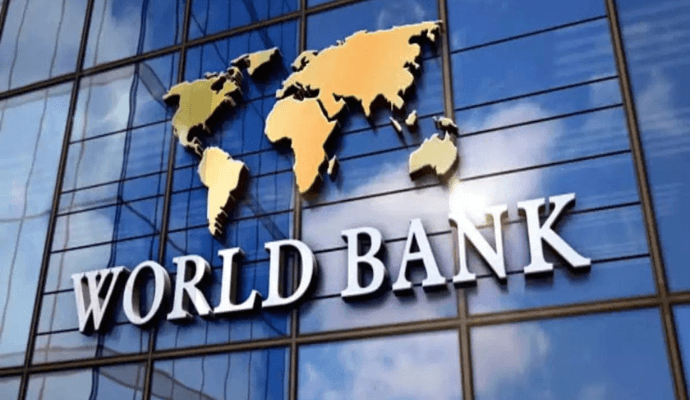Education
Nigerians Without Education Most Consumed by Poverty – World Bank
Published
8 months agoon

In the face of growing skepticism about the value of education in Nigeria, the World Bank has delivered a stark counter-narrative, stating that the uneducated are bearing the heaviest burden of poverty in the country.
Its newly released April 2025 Poverty and Equity Brief for Nigeria reveals that Nigerians without education are overwhelmingly more likely to live in extreme poverty, grappling with harsh economic realities that threaten their survival and future prospects.
Read Also:
Education as a Shield Against Poverty
The report, which provides an updated picture of poverty and inequality in Nigeria, shows that 79.5% of individuals aged 16 and above without any form of education live below the international poverty line of $2.15 per person per day.
This finding directly challenges the increasingly popular sentiment among many young Nigerians that “education is a scam.” Instead, the data affirms education as a crucial buffer against extreme poverty and a powerful enabler of improved living standards.
The trend is consistent across all levels of education. The World Bank notes that 61.9% of those with only primary education are still trapped below the poverty line, while the figure falls to 50% for individuals with secondary education.
Notably, the poverty rate drops sharply to 25.4% among Nigerians with tertiary or post-secondary education, indicating a strong correlation between higher education and reduced vulnerability to poverty.
Poverty’s Rural and Regional Roots
The education-poverty nexus is further complicated by Nigeria’s enduring rural-urban divide.
According to the World Bank brief, 75.5% of the rural population remains mired in deep poverty.
The report attributes this to persistent gaps in access to quality education and limited awareness of its value in many rural communities.
These factors continue to entrench generational cycles of deprivation in regions already disadvantaged by poor infrastructure and limited economic opportunities.
In terms of regional disparities, Nigeria’s north-south poverty divide remains pronounced. Based on data from the National Bureau of Statistics, the poverty rate in northern geopolitical zones stood at 46.5% in 2018/19, compared to just 13.5% in the southern zones.
The country’s Gini index, a measure of income inequality, was estimated at 35.1 during the same period, further highlighting the imbalance in wealth distribution.
More Nigerians Fall into Poverty Post-2019
The World Bank’s analysis also traces the evolution of poverty in Nigeria showing that before the COVID-19 pandemic, 30.9% of Nigerians lived in extreme poverty, and progress in poverty reduction had slowed to a crawl, with less than a 0.5 percentage point drop annually since 2010.
Since the 2018/19 survey, multiple economic shocks have pushed an additional 42 million people below the poverty line, bringing the estimated poverty rate to 54% in 2024, a figure screaming that more than half of Nigerians are now living in poverty.
This grim reality is linked to a host of structural challenges. In rural areas, livelihoods are often tied to low-yield subsistence agriculture, which is vulnerable to climate shocks and lacks productivity-enhancing support.
In urban centres, the few available jobs do not provide wages sufficient to match inflation, leaving even employed Nigerians unable to afford basic necessities.
Inflation, Job Shortages and Structural Reform
Despite recent macroeconomic reforms aimed at stabilising the economy, inflation continues to outpace income growth, shrinking consumer purchasing power and eroding living standards.
The World Bank points to the urgent need for reforms that protect the poor against inflation and promote economic inclusion through access to more productive jobs.
To cushion the poorest Nigerians from recent price shocks, the government has initiated temporary cash transfers targeting 15 million households. However, the implementation has been slow.
The World Bank recommends strengthening the social protection system and using fiscal gains from the removal of petrol subsidies to support investments in human capital development—particularly education and health—while also creating mechanisms to better withstand future shocks.
Inclusive Investment
In the long term, the Bank emphasises the need for sustained economic diversification, particularly into the non-oil sector, and more efficient public spending to foster inclusive growth.
Key investments in education, infrastructure, and healthcare must be prioritised to expand access to opportunity and reduce inequality.
Importantly, it stressed that these efforts should aim to build human capital that enables individuals to escape poverty and prevent its intergenerational transmission.
Share this:
- Click to share on X (Opens in new window) X
- Click to share on Facebook (Opens in new window) Facebook
- Click to share on WhatsApp (Opens in new window) WhatsApp
- Click to share on Pocket (Opens in new window) Pocket
- Click to share on Telegram (Opens in new window) Telegram
- Click to email a link to a friend (Opens in new window) Email
- Click to share on LinkedIn (Opens in new window) LinkedIn
You may like


Stability Without Relief? 10 Things the World Bank Says About Nigeria’s Reforms


139m Nigerians Still in Poverty Despite Tinubu’s Reform Gains – World Bank


World Bank Approves $300m to Support IDPs in Nigeria


World Bank Maintains Nigeria’s Growth Forecast at 3.6% Despite Global Economic Downgrades


World Bank to Withhold $10.4m Loan to Nigeria over Audit Deficiencies


Nigeria’s Fiscal Deficit Projected to Narrow to 3% of GDP by 2027










